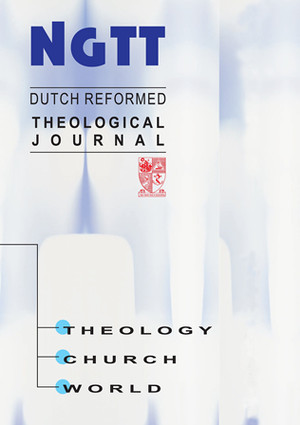Die uitbeelding van Petrus as herder in die Johannesevangelie
DOI:
https://doi.org/10.17570/ngtt.2006.v47n3.a28Keywords:
Gospel according to John, Narratology, Characterisation, Peter, Metaphor, ShepherdAbstract
Peter as Shepherd in the Gospel According to JohnIn this article the way in which Peter is characterised as shepherd in the Gospel according to John is investigated. Most Johannine scholars accept that Peter’s role as spiritual shepherd is emphasised in John 21. In this article this notion is taken a step further: it is argued that, in the portrayal of Peter, shepherd imagery already plays an important role earlier on in the Gospel, in particular in Chapters 13 and 18. In order to show its significance for understanding the way in which Peter is portrayed in this Gospel, the way in which the characterisation of Peter is developed in this Gospel is considered.
Published
2006-12-31
How to Cite
Tolmie, D. (2006). Die uitbeelding van Petrus as herder in die Johannesevangelie. NGTT | Nederduitse Gereformeerde Teologiese Tydskrif, 47(3&4). https://doi.org/10.17570/ngtt.2006.v47n3.a28
Issue
Section
Articles | Artikels
License
Copyright of all NGTT material belongs to the Pieter de Waal Neethling Trust (PDWN Trust). The PDWN Trust is a trust fund established in 1932 with the aim of promoting quality theological research and publications.
The PDWN Trust pledges to maintain a legitimate scholarly record of the author's work and to defend the author's article against plagiarism and copyright infringement.
The PDWN Trust is committed to full Open Source publishing. This means that all articles published in NGTT will gradually be made freely available online. Authors maintain the right to:
- Share and self-archive their work.
- Make printed copies of their article for educational use.
- Present their article at a meeting or conference and distribute printed copies of the article
- Adapt and expand their published journal article to make it suitable for their thesis or dissertation.
- Republish the article (ensuring that the original article is cited as published in NGTT).
For any questions or queries in this regard, please contact the Editor.


